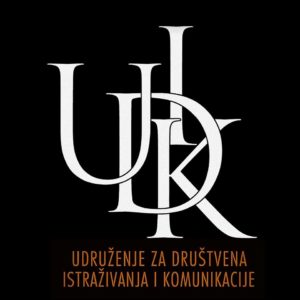 The International Day for Monuments and Sites (World Heritage Day) is held on 18 April each year around the world with different types of activities, including visits to monuments and heritage sites, conferences, round tables and newspaper articles. It was proposed by the International Council on Monuments and Sites (ICOMOS) and approved by the General Assembly of UNESCO.
The International Day for Monuments and Sites (World Heritage Day) is held on 18 April each year around the world with different types of activities, including visits to monuments and heritage sites, conferences, round tables and newspaper articles. It was proposed by the International Council on Monuments and Sites (ICOMOS) and approved by the General Assembly of UNESCO.
The Association for Social Research and Communication (UDIK) is the creator of the Central Register of Monuments (CES) which includes data on monuments devoted to the 1990s wars in the territory of the former Yugoslavia. According to this register, more than 2,100 monuments devoted to civilians and fighters killed during the Bosnian war were built in Bosnia and Herzegovina. Most monuments in the Federation were built in the Tuzla Canton (288), the Sarajevo Canton (270), the Zenica-Doboj Canton (238) and the Una-Sana Canton (228). In the Republika Srpska, the higher number of mapped monuments is in the region of Bijeljina, including a subregion Zvornik (231).
In the latest UDIK’s publication “Culture of Memory and Strategies of Representation of the War Past of the 1990s in Bosnia and Herzegovina, Croatia and Serbia”, the authors emphasized that memorials not only build identity, but also political ideology, which ultimately has ethnic apartheid – the separation of ethnic groups from each other, presented as bad or as enemies. The monuments give the message that all armies were honorable and that their members could not be complicit in the crime or commit the crime.
Furthermore, regardless of whether it refers to the massacre in Sarajevo’s Kazani or the memorial plaque at the Luka camp in Bosnia and Herzegovina, the matrix is the same – denial of crimes. In addition, the victimization of society is very popular, where each side believes that it has suffered the most.
Monuments are erected almost every day, but despite constant construction, some groups are still waiting for the appropriate memorial. Such an example is the civilian victims of the war in Brčko, which still do not have a central memorial erected by the local government, which erected monuments in the city center for the three armies (ARBIH, HVO and VRS).
There are few communities in Bosnia and Herzegovina that have shown understanding for victims of other nationalities. In fact, there are only three of them – Vareš, Žepče and Bosanski Petrovac. But even in these areas, not everything went smoothly when initiatives were launched and implemented to erect a monument to all victims, regardless of nationality. Also, we should not forget the Srebrenica Peace Monument erected in 2020, which caused the most misunderstandings and protests.
The process of memorization and the construction of monuments in Bosnia and Herzegovina show the crucial role of memory in the process of building our aspect of the recent past. Yet, there is a big challenge in front of us as individuals or groups to try, through active participation, public deliberation and discussion on what has happened, to enable the opening of the so far closed spaces in Bosnia. We need to enable for other actors and memory practices to find their place in that space, we need to create an atmosphere of dialogue and understanding, which could create a different interpretation of the monuments and the development of self-critical view towards the culture of remembrance.
 UDIK Udruženje za društvena istraživanja i komunikacije
UDIK Udruženje za društvena istraživanja i komunikacije

